Children’s Comprehensive Health Guide
When should my baby see a doctor? How does bullying affect my preteen? What medications are potentially dangerous for children? These are common questions parents have as their children reach different stages of their growth and development. Some children may face obesity, diabetes or hearing loss; others may require glasses or an EpiPen for allergies. You can promote children’s well-being by learning how their bodies grow, what diseases or disorders to look out for and how to identify risky products.

Newborns and Toddlers (Birth to 2 Years)
During the first two years of life, your newborn will mature into a toddler, reaching milestones along the way. The years are packed with doctor’s visits and medical screenings as well as decisions about breastfeeding, vaccines and teething remedies. Parenting a young child can be overwhelming, and it’s important to stay well-informed.
Newborn Screening
After birth, a baby will undergo a screening to look for certain rare but serious conditions. This is so a sick baby can be treated before developing more serious health problems.
All states require newborn screening for every infant, but the number of conditions for which a baby is tested varies. Most screening programs include blood tests and a hearing test; some states do heart defect screenings, too.
The federal government has made recommendations to guide states in the development of their programs. There are currently more than 30 conditions on the national Recommended Uniform Screening Panel.
- Cystic fibrosis (CF)
- Severe combined immunodeficiencies (SCID)
- Classic galactosemia (GALT)
- Critical congenital heart disease
Routine Well-baby Visits
Medical experts recommend parents bring their newborns and babies for regular doctor visits to keep them healthy. You and your baby will likely be visiting the doctor’s office nine times in the first 24 months for routine well-baby visits alone.
- 3-5 days
- 1-2 weeks
- 2 months
- 4 months
- 6 months
- 9 months
- 12 months
- 15-18 months
- 24 months
Vaccine Schedule
A doctor may recommend one or more vaccinations for your baby at the time of a well-baby visit, depending on the stage of your child’s development. Typically, vaccines are scheduled at birth, 2 months, 4 months, 6 months, 12 months, 15 to 18 months and 24 months. The U.S. Food and Drug Administration (FDA) has approved 10 different types of vaccines that are routinely given between a child’s birth and second birthday.
- Hepatitis A & B
- Diphtheria, tetanus and pertussis (whooping cough)
- Haemophilus influenzae type b
- Pneumococcal disease
- Rotavirus
- Polio
- Varicella (chicken pox)
- Measles, mumps and rubella
- Seasonal flu vaccine
Growth & Development
During routine well-baby visits, doctors will also weigh babies and assess their development. Every baby is unique, and some may achieve developmental milestones early while others may be behind the curve. Parents should be aware of warning signs that could indicate something is not right.
- Demonstrate improved head control
- Respond to loud noises, bright lights or other sounds or visual cues
- Smile at others or at the sound of parents’ voices
- Follow objects in motion with his or her eyes
- Notice his or her hands
- Grasp and hold objects
Experts say newborns lose about 5 to 10 percent of their birth weight immediately after birth. But by about 2 weeks, babies typically start gaining weight and growing rapidly. A newborn grows faster in the first few months than at any other point in life. Babies typically double their birth weight by 6 months old and triple their birth weight by 12 months old.

Most babies learn to crawl between 7 and 10 months of age and are walking by 15 months. As early as 6 months, babies may use real words such as “mama” and “dada,” and they should be forming sentences by their second birthday.
A newborn may sleep up to 17 hours a day in the first month of life — but no more than one to two hours at a time. Most babies don’t start sleeping through the night until after the first 3 months, or until they weigh at least 12 pounds. By age 6 months, more than 65 percent of babies are able to sleep through the night on a regular basis.
Breastfeeding, Formula & Solid Foods
The decision of whether to breastfeed or formula feed your baby is a personal one. If your baby is breastfeeding, it’s important that he or she be fed every two to three hours, eight to 12 times a day. Babies who are bottle feeding will normally eat every three to four hours in the first few weeks.
The American Academy of Pediatrics and the World Health Organization recommend exclusively breastfeeding until at least 6 months — in part because it helps guard against infections, prevent allergies and protect against several chronic conditions.
Certain medicines, however, can make breastfeeding unsafe. Women who breastfeed should always check with their physician or pharmacist before starting a new medication in order to make sure the medicine is safe for the breastfeeding infant.
The FDA warns mothers to avoid taking drugs such as Cymbalta, Pradaxa and Prilosec while breastfeeding because of a potential for the medicine to be excreted in human milk and cause harm to the baby.
From birth to age 4 months, your baby’s digestive tract is still developing. For that reason, solid foods are off-limits. Your baby’s diet should be restricted to breast milk or formula only. However, by age 6 months, your baby should begin showing signs of being ready to try solids.
Hearing
After just one week of life, your baby should be able to recognize and respond to your voice by getting quiet or smiling, though your baby won’t be able to understand what you’re saying at first. But infants with hearing loss may not respond to familiar voices when spoken to and may not startle when there is a close-by loud noise.
Sometimes hearing loss worsens over time, and children who had normal hearing as infants can develop hearing loss as they get older. Exposure to certain medicines in the womb or after birth can be the source of hearing loss.
Vision
A baby’s first eye exam happens in the delivery room. After that, babies should typically have their eyes inspected each time they visit the doctor’s office for a well-baby visit, according to the American Academy of Pediatrics. After two weeks of life, babies can typically focus on objects 8 to 14 inches away. By this age, babies tend to focus on parents’ faces during feedings. Next, you might catch your baby studying his or her hands and feet. By age 3 months, babies can be easily distracted by something they see and find interesting.
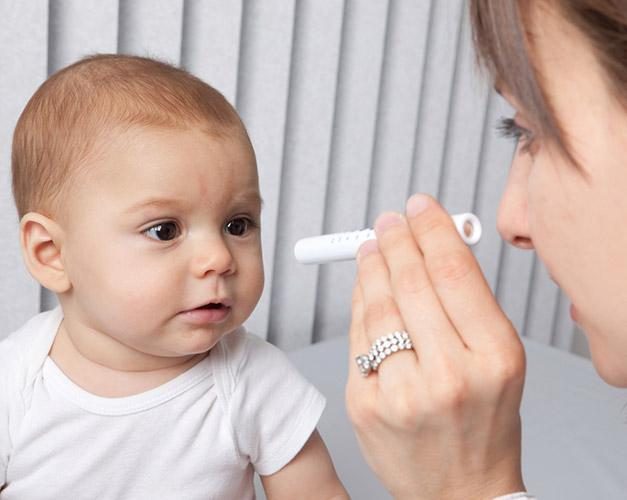
- Amblyopia (Lazy Eye)
- Ptosis (Drooping Eyelid)
- Strabismus (Eye Misalignment)
- Congenital Cataract (Cloudiness or Opacity of the Eye)
- Blocked Tear Duct
Teething & Baby’s First Dentist Visit
Your baby will also need to see a pediatric dentist no later than his or her first birthday. The American Dental Association recommends babies have their first dental appointment within six months of their first tooth poking through. During the first visit, the dentist will examine the baby’s mouth and provide the parent with information about protecting children’s teeth and establishing good dental habits.
Most babies begin cutting teeth around 6 months, although it could happen as early as 3 months or as late as 14 months. The first growth of teeth through the gums and the accompanying phenomena is known as teething.
Easing Teething Pain
To help ease the discomfort, you can give your teething baby something to chew on, such as a firm, rubber teething ring or a washcloth that’s been chilled in the refrigerator. You can also rub your finger gently over your baby’s sore gums or, if your baby eats solids, give him or her cold foods such as applesauce or yogurt.
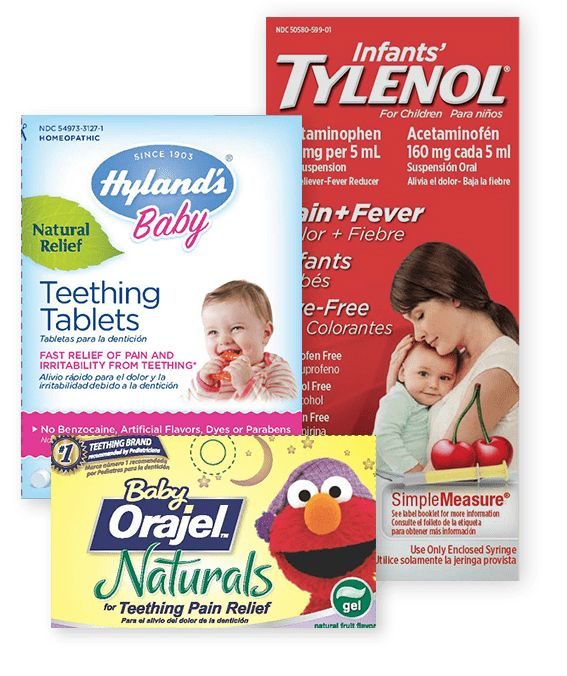
- Infants’ Tylenol
- Some doctors may recommend giving a teething baby who is 6 months or older Infants’ Tylenol. It’s important to ask the baby’s doctor for the correct dosage before administering the medicine. Tylenol is relatively safe when taken at the correct dosage; however, ingesting too much of the drug can result in serious complications, including liver failure.
- Homeopathic Teething Tablets & Gels
- In September 2016, the FDA put out a news release advising consumers to stop using homeopathic teething tablets and gels and dispose of any in their possession. The agency warned it had received reports of seizures in infants and children who were given these products.
- Baby Orajel & Other Benzocaine Products
- In April 2011, the FDA warned consumers that use of benzocaine, the main ingredient in over-the-counter gels and liquids applied to gums or mouth to reduce pain, is associated with a rare but potentially deadly condition called methemoglobinemia, which causes a significant drop in the amount of oxygen carried through the blood stream. Benzocaine gels and liquids include Anbesol, Hurricaine, Orajel, Baby Orajel and Orabase.
Birth Defects
Birth defects affect 1 in 33 babies every year in the U.S. and cause 1 in 5 infant deaths. “Every 4 ½ minutes, a baby is born with a birth defect in the United States,” according to the Centers for Disease Control and Prevention. “That means nearly 120,000 babies are affected by birth defects each year.” There are 4,000 different types that range from mild birth defects that can go untreated to severe ones that cause disabilities or require medical intervention. Women who used certain medicines — such as Topamax, Zoloft, Zofran, Prozac, Paxil, Depakote, Lexapro, Celexa and Accutane — during pregnancy have reported giving birth to babies with structural birth defects, which occur when a baby is born with missing or malformed body parts.
Children (3 to 8 years)
As toddlers morph into children, they continue to need routine check-ups at their doctors’ offices. Your child should see a doctor at ages 3, 4, 5, 6 and 8.
A primary care doctor may recommend 4-year-olds receive another round of vaccines, including diphtheria, tetanus, acellular pertussis (DTaP); varicella (chicken pox); measles, mumps, rubella (MMR) and polio (IPV).
Childhood Allergies
Any child may develop allergies. Allergic reactions can affect the eyes, nose, throat, lungs, skin and gastrointestinal tract. Some allergies happen only at certain times of the year. These are known as seasonal allergies. Others can happen any time someone comes in contact with a substance that causes an allergic reaction, known as an allergen.
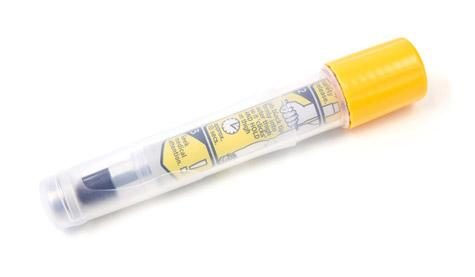
Allergic reactions range from annoying to serious or life-threatening. A potentially life-threatening allergic reaction is referred to as anaphylaxis and can happen within seconds of exposure to an allergen or not until hours later. If anaphylaxis is not treated quickly, it can be fatal. Symptoms of anaphylaxis start out the same as other allergic reactions but escalate rapidly.
Anaphylactic reactions are rare, and doctors encourage anyone diagnosed with a life-threatening allergy to carry an epinephrine auto-injector (EpiPen) in case of emergency. Epinephrine reduces swelling and raises blood pressure. After children use injectable epinephrine, they should be rushed to the hospital.
Conditions Caused by Allergies
Allergies can lead to other childhood ailments such as allergic rhinitis and ear infections. These conditions can affect sleep and a child’s overall quality of life. Children who suffer from symptoms of these conditions should see an allergist for possible testing and treatment.
- Allergic Rhinitis (Hay Fever)
- Airborne allergens can cause allergic rhinitis — or hay fever. Symptoms of this condition include a runny and itchy nose, sneezing, postnasal drip and nasal congestion. Despite its name, hay fever is not caused by hay and doesn’t bring about fever. It affects as much as 40 percent of children. In 2014, the FDA approved two immunotherapy products for use in children that are taken under the tongue for treatment of hay fever caused by certain pollens.
- Ear Infections
- A child with allergies may suffer from inflammation and fluid buildup in the ears. These conditions can foster ear infections and hearing issues. Allergies can lead to earaches and can cause ears to itch, pop or become stopped-up. Zithromax (Z-Pak) is commonly used in children to treat ear infections.
Childhood Bullying & Its Health Effects
Research shows that bullying behavior can start as early as age 3. Both children who are bullied and those who bully others may have serious lasting health problems as a result of these actions.
A 2017 study by University of Pittsburgh researchers, for example, found that children who are bullied experience mental and physical health issues that can last well into adulthood. The study showed that bullied children are more likely to have trouble with finances and to be treated unfairly by others. They are also more pessimistic about their futures, according to the study.

On the other hand, the study revealed bullies are more likely to be stressed, hostile and aggressive, and to smoke cigarettes and marijuana. Both bullies and their victims are at a higher risk of heart disease, which is the leading cause of death for both men and women.
Doctors may prescribe the use of prescription drugs to treat the health effects of bullying. For example, children who suffer from depression or anxiety disorders (two health effects of bullying) may be prescribed selective serotonin reuptake inhibitors (SSRIs), such as Prozac. It’s important for parents to be aware that all SSRIs carry risks. The drugs’ labels feature a black box warning — the FDA’s most stringent warning — for an increased risk of suicidal thoughts and behaviors in children.
Childhood Obesity
Childhood obesity levels are at an all-time high, according to the FDA. Since the 1970s, the percentage of children with obesity in the U.S. has more than tripled, according to the CDC. At present, about one in five school-aged children is obese.
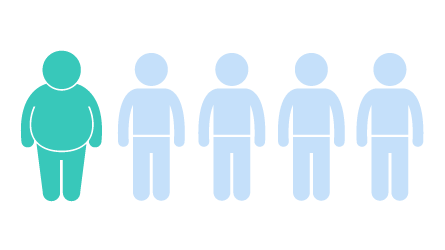
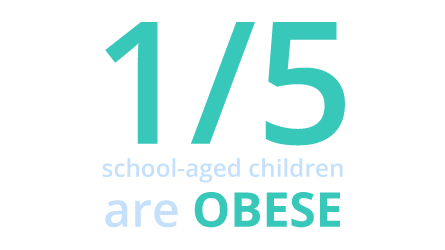
Parents who are worried their children may be obese should talk with their children’s doctor. As part of routine check-ups, doctors calculate children’s body mass index (BMI) and determine whether a child’s weight is in an unhealthy range.
To date, there are no medications approved for use in children to control obesity. The FDA has approved two medications for long-term weight management in adults; however, these drugs were not studied in children and are not approved for use in anyone under 18 years old.
However, children who develop conditions as a result of obesity may be prescribed drugs intended to treat those problems. For example, a child with obesity who develops heartburn may be prescribed a proton pump inhibitor, such as Prilosec, Nexium or Prevacid. Though these drugs are proven to alleviate heartburn, long-term use of these medicines has been potentially linked to serious side effects, including bone and kidney injuries.

Preteens (9 to 12 years)
The preteen years bring about rapid changes in physical and mental development. For many this includes puberty, which can start as early as age 8 or 9 in girls and as early as age 9 or 10 for boys.
Girls begin to develop breasts as young as 8, grow body hair at an increased rate and begin menstrual cycles about two years after they begin developing breasts. Growth spurts tend to peak around age 11 and conclude around age 16.
Boys see genital growth around the age of nine, their voices begin to change and they begin to grow body hair at an increased rate around age 12. Growth spurts peak around the age of 13 and slow around 18.
Doctor’s Visits & Vaccines
Older children should see their doctors for routine check-ups at ages 10, 11 and 12. At the latter two visits, your child’s doctor may suggest three vaccines: the tetanus, diphtheria acellular pertussis (Tdap) vaccine, the human papillomavirus (HPV) vaccine and the meningitis (MCV) vaccine. The CDC also recommends preteens get a seasonal flu vaccine every year.
- One shot of Tdap
- A two-shot series of HPV vaccine at least 6 months apart (a three-shot series is needed for those with weakened immune systems and those age 15 or older)
- A single shot of a quadrivalent meningococcal conjugate vaccine (MenACWY)
Childhood Mental Illnesses & Developmental Disorders
Childhood developmental or learning disorders are often diagnosed when a child is of school-age. Mental illnesses, however, can be hard for a parent to identify. Although children can develop the same mental health conditions as adults, they sometimes express them in different ways. In 2013 alone, more than 8.3 million children were taking psychiatric drugs. About half of the medicated children were between the ages of 6 and 12.
Anxiety Disorders
Anxiety disorders are a group of mental disorders branded by feelings of anxiety and fear. Children may have more than one anxiety disorder. More than 2 million children were on anti-anxiety medications in 2013. The age group with the largest number of medicated children was ages 6 to 12 years.
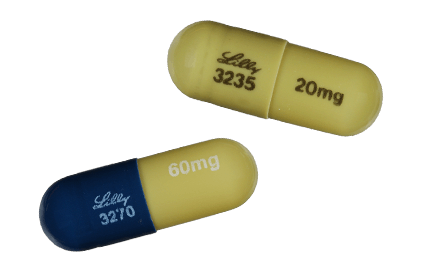
Generalized Anxiety Disorder (GAD)
It’s perfectly normal for your child to stress about grades or an upcoming sporting event. However, if your child worries excessively or if anxiety and fear affect your child’s ability to perform daily activities, your child may be suffering from GAD. Doctors may prescribe Cymbalta, a serotonin-norepinephrine reuptake inhibitor (SNRI) as treatment. In 2014, the FDA approved Cymbalta for the treatment of GAD in children ages 7 to 17. SNRI medications carry potentially serious risks, including birth defects, skin reactions, suicidal thoughts and liver toxicity. The FDA also warns of Cymbalta discontinuation syndrome, which is when a person experiences withdrawal side effects after stopping Cymbalta. Effexor, another SNRI, has not been approved by the FDA for use in children, but some doctors prescribe it for older teens as an off-label treatment for depression and anxiety.
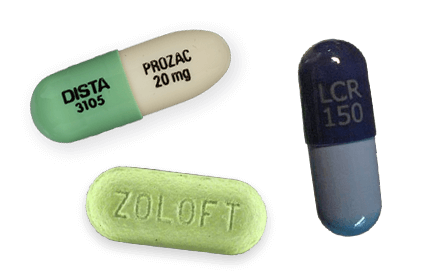
Obsessive Compulsive Disorder (OCD)
Children with OCD experience unwanted and intrusive thoughts — or obsessions. They feel compelled to repeat rituals and routines to try to lessen their anxiety. OCD can affect children as young as 2 or 3, though most children with OCD are diagnosed around age 10. The FDA has approved several drugs to help control the symptoms of OCD in children, including Prozac, Zoloft and Luvox.
Tourette Syndrome
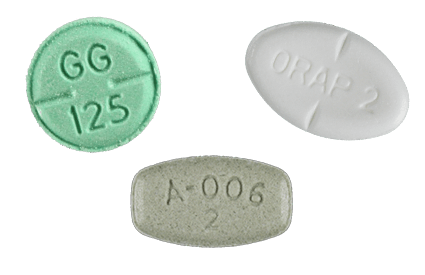
Children with Tourette syndrome may make unusual movements or sounds known as tics. The FDA has approved haloperidol, pimozide and aripiprazole to treat tics. All three medications have the potential to cause unwanted side effects, so doctors may prescribe the blood pressure medications guanfacine or clonidine instead. This is known as “off-label” use because the FDA has not approved either drug for treatment of tics.
Mood Disorders
Every child can feel sad or depressed at times, but mood disorders are more extreme and harder to manage than typical sadness. Doctors may prescribe mood stabilizers, antidepressants or antipsychotics to treat mood disorders in children. Mood stabilizers include medicines such as lithium and Depakote (valproate). Depakote is an anti-seizure drug that is used off-label for children with bipolar disorder. The medication has a black box warning for increased risk of liver failure and pancreatitis in children and adults.
SSRIs are popular antidepressants, despite the potential for an increased risk of suicidal thoughts in children. Prozac is the only SSRI approved for use in children with mood disorders older than 8 years of age. Antipsychotics prescribed to children with this condition include Abilify (aripiprazole), Risperdal (risperidone) and Invega (paliperidone), among others.
These atypical antipsychotics can have serious side effects in children like drastic weight gain, sedation and movement disorders. Risperdal and Invega may also result in a side effect called gynecomastia, a condition where boys develop breasts.
Nearly 2.2 million children were on antidepressants in 2013, and more than 830,000 were taking antipsychotics.
Attention Deficit Hyperactivity Disorder (ADHD)
Doctors have been diagnosing children as young as 4 with ADHD. In the past nearly 30 years, the number of children diagnosed with ADHD has grown six-fold. Scientists estimate about 5 percent of children actually have ADHD, but the CDC shows that nearly 10 percent have been diagnosed.
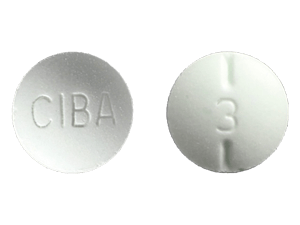
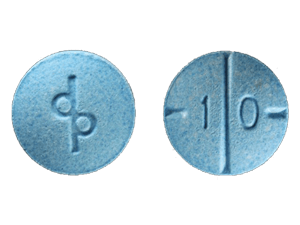
Doctors usually treat children with ADHD with stimulants such as Ritalin (methylphenidate) and Adderall (amphetamine and dextroamphetamine). Side effects of these drugs include decreased appetite, sleeping problems and headaches. Less common but more severe side effects include the development of tics and personality changes. Data from 2013 showed more than 4.4 million children were on ADHD drugs.
Children with a history of heart conditions may have a higher risk of strokes, heart attacks and sudden death when taking stimulants. Studies have also found rare cases of children developing hallucinations – such as hearing voices and increased suspicion without reason – or becoming manic.
Diabetes in Children
For years, Type 1 diabetes — formerly known as juvenile diabetes — was the common type of diabetes in children. But as childhood obesity continues to rise, doctors are diagnosing more children with Type 2 diabetes.
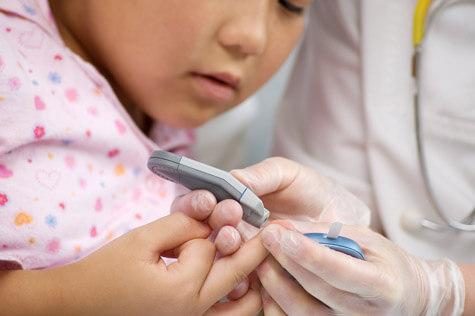
There is no cure for Type 1 diabetes, and the disease does not go away on its own. It requires lifelong treatment. Children with the disease need daily insulin injections or an insulin pump to control the levels of glucose in their blood.
One glucose-lowering medication, metformin, is FDA-approved for use in children with Type 2 diabetes. Metformin can cause a serious and sometimes deadly side effect called lactic acidosis, which is when lactic acid builds up in the blood. This condition is rare and mostly occurs in people whose kidneys are not working properly.
The FDA has approved a number of different drugs for diabetes in adults, such as sodium-glucose co-transporter-2 (SGLT2) inhibitors. Some adult diabetes drugs are currently being studied for use in children.
Children & Medications
Children are particularly vulnerable to the potentially harmful side effects of drugs during important stages of physical and mental development. Of note, the amount of mental health drugs prescribed to youth has increased at an alarming rate, and each comes with its own risk.
- Zithromax (azithromycin) or Z-Pak
- Ritalin, Concerta, Daytrana, Methylin and Metadate (methylphenidate)
- Dextromethorphan (the ingredient in many cough medicines)
- Adderall and Adderall XR
- Promethazine
- Ciprofloxacin
Over-the-counter medications should be taken with similar caution, and parents should not always give children the same drugs as adults. Aspirin, for example, is not recommended for anyone younger than 20 because of the risk for Reye’s syndrome, a condition involving swelling of the liver and the brain.
The FDA strongly recommends that cough and cold medicines should never be given to children under 2 years old. The agency also recommends that cough and cold medicines should be used with caution for children younger than 11 years old.
Infants often have heartburn and some doctors may prescribe medications such as Zantac (ranitidine) and proton pump inhibitors to control symptoms. For example, Zantac was used in children as young as one month old.
But in 2019, ranitidine manufacturers began recalling lots of the medication because they were contaminated with NDMA, a known carcinogen. In April 2020, the FDA requested the removal of all prescription and over-the-counter ranitidine products from the U.S. market. Zantac 360 is now available in a new over-the-counter formula made with famotidine.
Teens (13 to 17 years)
The teenage years are a time that changes how a developing child thinks, feels, interacts with others and how their bodies grow, according to the CDC. Girls are mostly physically mature by ages 15 to 17, most having completed puberty, while boys may still be maturing physically.
Unique personalities and opinions are shaped during the teenage years as well, with teens breaking off in their own directions to pursue their individual interests, establishing a sense of self. Teenagers start to develop more independence and take on more responsibility, such as working part-time jobs or preparing for college. Other changes include:
- Showing more interest in romantic relationships and sexuality
- Spending more time with friends and away from home
- Feeling sadness or depression, or engaging in risky behaviors, such as drinking or using drugs, or practicing unsafe sex
- Learning better work habits
- Showing concern about the future, including college and career choices
- Being better able to understand and explain their choices, developing a greater sense of right and wrong
Doctor’s Visits for Teens
Barring an injury or illness, teens should be seen annually for well-being checks. Issues involving puberty and sexual development will be addressed at these appointments. Teenage girls are often referred to gynecologists for sexual health, while a teen male’s primary doctor will check them for hernias and testicular cancer during a physical exam.
Teens will also be assessed for risky behaviors, such as use of alcohol, cigarettes or other substances, teen violence or sexual activities, and emotional problems, such as depression or risk of suicide. For example, e-cigarette use — also called vaping or Juuling — is on the rise among teens, and many experts consider it an epidemic.
E-cigarettes contribute to a number of health problems such as nicotine addiction and lung problems. The CDC also notes that e-juice or vape juice contains many other harmful substances. E-cigarettes can harm adolescent brain development. In April 2019, the FDA warned that it received reports of seizures in young people who vaped.
Some teens may need to see a doctor to help them quit vaping.
Immunizations
By age 13, teens should have received most of their immunizations. Doctors also recommend that the flu vaccine be received before flu season each year, usually by October. Teens with chronic medical conditions, such as asthma, or teens who may be pregnant, are at high risk of developing health problems from the flu.
The flu vaccine can cause possible side effects ranging from mild to severe. These side effects include soreness, redness or swelling at the injection site in the upper arm. Low-grade fever and aches are possible, as well as severe allergic reactions, including anaphylaxis.
Gynecology Visits
Girls should have their first visit to a gynecologist between the ages of 13 and 15, according to the American College of Obstetricians and Gynecologists. A gynecologist is a specialty doctor who focuses on female health and the female reproductive system.
The first visit may just involve talking to the gynecologist and getting to know what is to be expected at future appointments. The gynecologist will likely ask about a lot of personal information. Topics might include menstruation or sexual activities, if the patient is already sexually active. All information can be kept confidential.
Exams that will be performed by the gynecologist with a nurse or family member present, include a general physical exam as well as an external genital exam. A pelvic exam, or PAP test, is typically only performed in teens when there are problems, such as pain or abnormal bleeding. This test checks for abnormal changes in the cervix that could potentially lead to cancer.
Teen Sexuality
As the body changes during puberty, not just physically but hormonally as well, teens will begin to feel an increase in sexual feelings. Sexual development in teens is an important factor in identity formation and the establishment of social relationships among peer groups.
Sex, including a person’s sexual orientation, gender identity and making the decision whether or not to have sex, are among the most common issues experienced during a teen’s normal development.
Gender identity refers to a person’s internal sense of being male, female or in between.
- Same sex (homosexual, or gay or lesbian)
- Opposite sex (heterosexual, or straight)
- Both sexes (bisexual)
- No interest in sex at all (asexual)
Advocates for Youth estimates that in the U.S., regardless of sexual orientation, nearly half (46 percent) of all high school students, and 62 percent of high school seniors, have had sex.
Making the decision to have sex, especially unsafe (unprotected) sex, or to explore sexual feelings, opens a teen up to new health risks and the possibility of teen pregnancy.
Sexually Transmitted Diseases
Sexually transmitted diseases, or STDs, are diseases that are spread from one person to another through sexual contact. This contact can occur by way of vaginal, anal or oral sex. STDs can also be spread regardless of actual intercourse, or penetration.
- Chlamydia
- Gonorrhea
- Genital Herpes (can be spread by skin-to-skin contact)
- Human papillomavirus (HPV) (can be spread by skin-to-skin contact and can sometimes lead to cancer)
- Syphilis
- HIV
STDs are common among teens. Of the approximate 20 million new cases of STDs each year in the U.S., about half occur in young people between the ages of 15 and 24, according to the CDC.
There are several reasons why younger people who are sexually active have a higher risk of acquiring an STD.
- Young people, especially teens, are less likely to get tested for STDs
- Teens are less likely to speak openly with their doctor about sex
- Lack of insurance and transportation can prevent young people from getting tested or treated for STDs
- Teens and young people sometimes have sex with more than one partner
Some STDs, such as chlamydia and gonorrhea, can be treated with prescription medicines. Other STDs, like herpes and HIV, cannot be cured, but a doctor can prescribe various medications to treat symptoms and reduce progression of the infection.
STDs are often treated with oral or injected antibiotics. HIV is treated with antiretroviral drugs that can help people live longer and prevent transmission to others, including a fetus during pregnancy.
These drugs can cause various side effects, some severe. But if STDs are left untreated, they can often lead to infertility (difficulty getting pregnant) or other complications. STDs such as HIV, can be deadly.
Teen Pregnancy and Birth Control
A total of 229,715 babies were born to teens aged 15 to 19 in 2015, the CDC says. Although this shows a decline from 2014, the U.S. still retains the highest number of teen pregnancies among the most developed countries around the world. Additionally, in 2013, the CDC reported that one in five teen births is a repeat birth, meaning it’s at least the second birth for the teen mother.
Teen mothers and their babies are more likely to experience health complications than women who wait to have children. Teen mothers have a greater risk for maternal illness, miscarriage, stillbirth and newborn deaths. Their infants may be born at lower birth weights and experience other health and developmental problems. There are also social and economic consequences associated with teen pregnancies.
The CDC reported that the drop in the number of teen pregnancies may be due to more teens abstaining from sex, or more teens using birth control than before.
- Depo-Provera
- a shot given every 3 months
- Norplant
- an implant inserted under the skin and effective for up to 5 years
- Low-dose birth control pills
- these pills are fairly safe for use in teens, but may result in several mild to serious side effects
- Condoms
- condoms can also protect against sexually transmitted diseases
- Emergency contraceptive pills
- can be taken within 72 hours of unprotected sex by prescription only if under 18
One study showed that access to effective birth control was successful in preventing teen pregnancies. The report published in the New England Journal of Medicine in 2014, found that, over the years they were observed, not a single woman became pregnant of the 560 women who were determined to be at high risk for pregnancy who were given free access to hormonal implants and copper IUDs.
Teen Stress
During the school year, teens report levels of stress that exceed those reported by adults, according to a poll conducted online on behalf of the American Psychological Association (APA). Results from the poll showed that just over 30 percent of teens reported feeling overwhelmed, while 30 percent also reported feeling depressed or sad due to stress. But even while stress experienced by teens is similar or greater than that of adults, teens are more likely to underestimate its impact on their physical and mental health, according to the poll.
Teen stress could be triggered by any number of things, including pressure to excel both academically and socially, career decisions, dating and friendships. Pressure to act or dress a certain way, negative thoughts and feelings about themselves or their changing bodies and conflicts with family and/or peers are also possible factors.
Some methods used by teens to cope with stress may lead to unhealthy habits. Nearly a quarter (23 percent) of the teens polled reported skipping meals due to stress, while 36 percent said they often felt tired. Sleep, diet/nutrition and exercise are all directly linked to a person’s stress levels as well. Not getting enough sleep or making unhealthy food choices can further exacerbate stress in teens.
Stress that is not adequately managed can lead to anxiety, social withdrawal, aggression, physical illness and substance abuse.
Results from the survey also showed that teens inundated by stress may be setting themselves up for a lifetime of chronic illness and future chronic stress. Clinical psychologist and the APA’s CEO, Norman Anderson, said that the patterns of stress seen in adults today may be the product of what occurred in their teen years, and if not reversed early, these patterns could lead to shorter lifespans in the next generation of elders.

Prescription Drug Abuse
While illegal drug-use among teens is declining, prescription drug abuse is on the rise, according to the National Institute on Drug Abuse (NIDA). In fact, after marijuana and alcohol, prescription drugs are the most commonly abused substances by U.S. teens aged 14 and older. These drugs are misused for various reasons, including to get high, stop pain, stay alert or to lose weight.
Prescription drugs are often strong medications prescribed for specific conditions. When these medications are prescribed, doctors consider several different factors in determining a patient’s safety and overall risk versus benefit. Every medication has side effects, some of which can be severe or life-threatening. When these prescription drugs are misused, it is just as dangerous as taking illegal drugs. Additionally, if taking more than one drug, a teen can expose themselves to dangerous drug interactions that can cause seizures, coma or death.
The impact of prescription drug misuse can especially be harmful to teens because their brain and body is still developing. A person’s brain continues to develop into their early- or mid-20s. Drug-use can harm or reinforce developing neural pathways, making life-long addiction a higher probability. Also, it is very possible to overdose on prescription drugs with more than half of all drug overdose deaths in the U.S. being attributed to prescription drug abuse.
- Opioids
- Opioids are narcotic pain medicines that act on the same parts of the brain as heroin and cause a morphine-like effect. They include drugs such as Vicodin (acetaminophen and hydrocodone), OxyContin (oxycodone), codeine and fentanyl. These medications can cause drowsiness, nausea, constipation, slowed breathing and death.
- Stimulants
- Stimulants, or psychostimulants, increase activity in the body. These medications are generally used to treat ADHD. The most frequently prescribed stimulants are Adderall (amphetamine and dextroamphetamine), Ritalin (methylphenidate) and Vyvanse (lisdexamfetamine). Side effects of stimulants are similar to those seen with cocaine, including paranoia, dangerously high body temperatures and irregular heartbeats, especially when taken in large doses.
- Depressants
- A depressant is a drug that lowers arousal or stimulation in various areas of the brain. While stimulants are sometimes called “uppers,” depressants are often referred to as “downers.” Depressants are used to treat anxiety or help a person sleep. These medications include Valium and Xanax (both benzodiazepines). Depressants can cause slurred speech, shallow breathing, fatigue, disorientation, lack of coordination and seizures upon withdrawal after chronic use.
Eating Disorders
As teenagers develop physically, they might have concerns about their changing bodies, including its size, shape and weight. Eating disorders are common during these years, especially in girls. About 40 percent of teenage girls have eating disorders, while 91 percent of female teenagers have attempted to control their body weight with dieting, according to the Massachusetts Eating Disorders Association. Males are affected by eating disorders as well, and some experts say the numbers of teenage boys with eating disorders are rising.
- Organ and body part injury and/or damage to the brain, liver, kidneys, heart, GI tract, bones, teeth, skin and hair
- Hormonal imbalances and lack of menstruation in girls
- Slowed or stopped growth
- Kidney impairment and/or kidney failure
- Death
- Osteoporosis (a disease that weakens bones resulting in sudden and unexpected fractures)
- Ulcers
- Dehydration
- Malnutrition
- Heart failure
Teens with eating disorders are often over-achievers or perfectionists. Despite their high performance, however, most teens with eating disorders will have low self-esteem and be extremely critical of themselves. They often suffer from other psychiatric disorders as well, such as mood and anxiety disorders. Eating disorders can lead to other self-injurious behaviors, such as cutting or burning oneself, and abusing drugs and alcohol.
Treatment might include therapy, working with a nutritionist, or taking various medications to treat symptoms, other medical conditions caused by the eating disorder, or depression or anxiety.
Calling this number connects you with a Drugwatch.com representative. We will direct you to one of our trusted legal partners for a free case review.
Drugwatch.com's trusted legal partners support the organization's mission to keep people safe from dangerous drugs and medical devices. For more information, visit our partners page.

